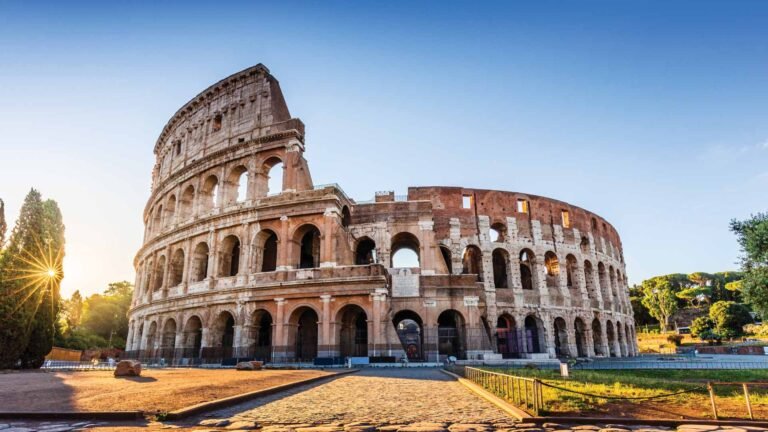There’s no shortage of stunning historical cities in Italy, but few can compare to the charm and splendor of its capital, Rome. Its moniker, the Eternal City, captures the essence of a metropolis that has stood the test of time.
From the grandeur of the Colosseum to the magnificence of the Sistine Chapel, every inch of Rome is steeped in ancient history. It is here, amidst the echoes of empires and the whispers of that history, that Rome’s heart continues to beat, undaunted by the passage of centuries.
As you enter the city, you’ll encounter remnants of a glorious past, from the culturally significant Roman Forum to the hallowed halls of the Pantheon, bursting with tales of empires, gladiators, and artistic genius.
The city’s ageless allure stems from its ability to embrace both the ancient and the modern, weaving together tales of conquest, splendor, and human resilience. So, are you ready to feel the heartbeat of Italy? Join us as we explore the unparalleled historical and cultural significance of Rome.
Rome — the city of visible history, where the past of a whole hemisphere see moving in funeral procession with strange ancestral images and trophies gathered from afar.”
GEORGE ELIOT
Where is Rome Located?
Rome is located in the Lazio region of Italy, which is bordered by Tuscany, Umbria, Abruzzo, and Campania. The Tiber River flows through the city, dividing it into two parts (similar to Paris).
- The left bank is where the Vatican City and Trastevere neighborhoods are located.
- The right bank is where you’ll find the Colosseum, Roman Forum, and many other ancient monuments.
Fun Fact: The name Trastevere means “beyond the Tiber” or, more conversationally, “across the Tiber River.”
History of Rome
Rome is one of the oldest capital cities in Europe (following Athens and, to most travelers’ surprise, Lisbon). According to legend, Rome was founded by twin brothers Romulus and Remus on April 21st, 753 BC.
However, historical records show that Rome began as a small town in central Italy, which grew rapidly and, by the sixth century BC, had become a powerful city-state in Italy and an empire that dominated much of the known world at the time.
In 509 BC, Rome became a republic governed by the Senate and the Roman people and, for the next 500 years, dominated the Mediterranean world. However, in the first century BC, Rome went through a series of political and social crises that led to the downfall of the republic.
Julius Caesar, one of the most famous Roman leaders, became a dictator in 44 BC, but his assassination led to a civil war, and the republic eventually fell (check out Queen Cleopatra on Netflix for a riveting historical recreation of what led to his assassination!).
In 27 BC, Augustus became the first emperor of Rome and ushered in a period of peace and stability known as the Pax Romana, which lasted for 200 years. During this time, Rome became the center of the world, and its influence spread across Europe, Asia, and Africa.
Despite its many successes, Rome eventually declined due to economic, military, and political factors, and the empire fell in 476 AD when the last Roman Emperor was deposed by the Germanic leader Odoacer.
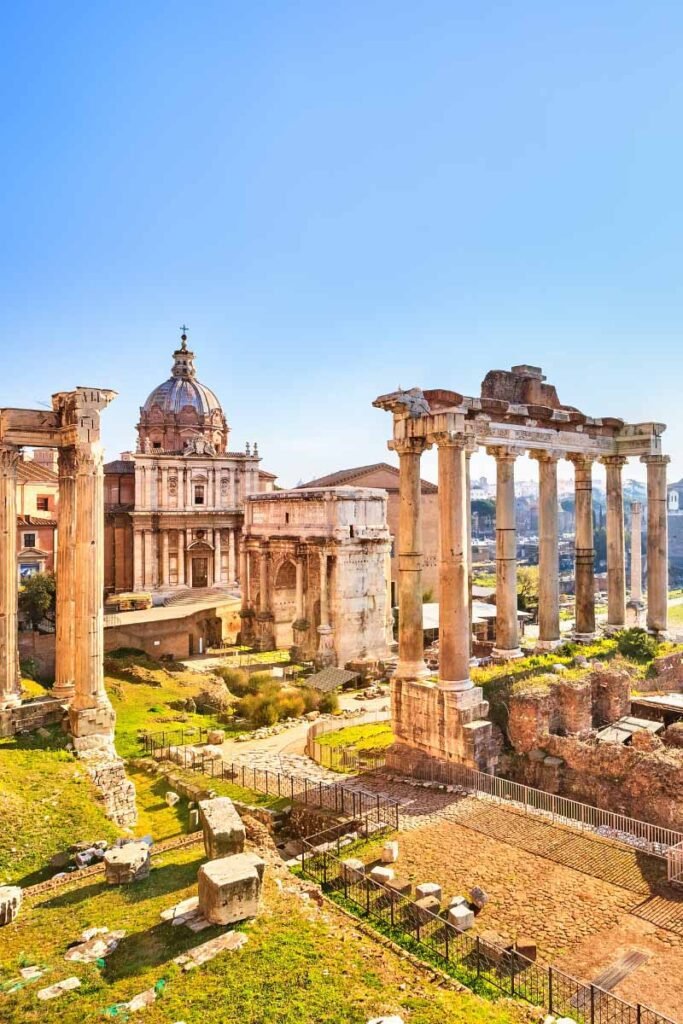
Nevertheless, the legacy of Rome continues to influence the world today, with its impressive architecture, language, achievements in engineering, law, military tactics, and culture still playing a vital role in modern times.
- Rome is older than Italy. Italy didn’t become a unified nation until the 19th century, making the city of Rome thousands of years older than the actual country.
- Rome wasn’t always the capital city. There’s no denying Rome has been an incredibly important city in both ancient and modern times, but it hasn’t always been the capital of Italy. After Italy officially became a country, Turin was named the capital city. Then, Florence had its turn until 1871, when Rome was finally established as the country’s capital.
- Much of Rome remains hidden still! Experts estimate that only 10% of Rome has been excavated. So, there’s a lot about Rome and its infrastructure that we still don’t know.
As one of the world’s most historically significant cities, there’s a lot more to Rome than just these three fun facts. However, instead of making you read through a long list of dates, we’ll leave (and urge) you to plan a trip to Rome so you can experience its rich history and culture first-hand.
Features of Rome
Nestled among seven fabled hills, Rome is home to structures new and old, from the mighty Colosseum to the soaring Vatican. Traverse its labyrinthine streets, and you’ll discover charming piazzas, ancient ruins, and modern parks — a captivating blend of Rome’s timeless beauty.
Geography & Climate
Rome is located in the central region of the Italian peninsula. It’s about 15 miles inland from the Tyrrhenian Sea and is positioned along the banks of the Tiber River that divides the city into two.
The city has a temperate Mediterranean climate characterized by hot and dry summers and mild winters with occasional rainfall. The average temperature in summer is around 85°F (29°C), while in winter, it’s around 50°F (10°C).
The geography of Rome is diverse, with hills, valleys, and plains, all of which played a significant role in the growth and expansion of the Roman Empire, which ultimately included much of Europe, Asia, and Africa.
Rome’s Seven Hills: Aventine Hil, Caelian Hill, Capitoline Hill, Esquiline Hill, Palatine Hill, Quirinal Hill, and Viminal Hill
Population
Rome is the capital city of Italy and has a population of approximately 4.3 million inhabitants. This makes it the largest city in Italy, followed by Milan and Naples.
Rome is also one of the largest cities in the European Union and was once the largest city in the world. During Emperor Augustus’ reign, the population of Rome reached 1 million in 210 AD.
Interesting Facts About Italy’s Capital
When you think of Rome, your mind probably jumps to the Colosseum, the Pantheon, or the Vatican (and, yes, we’ve even mentioned them a few times already — they are quite popular and significant). However, there’s more to know about the Italian capital city than what you see pasted across Instagram.

How Old is Rome?
Rome was founded on April 21, 753 BC, which means that Rome is over 2,700 years old. It started out as a small village along the Tiber River and eventually grew into a powerful city-state that dominated the Mediterranean world for centuries.
How Did Rome Fall?
The fall of Rome, a complex and multifaceted event, was caused by a combination of factors that gradually eroded the once-mighty empire.
As Rome expanded its territorial conquests, it struggled to maintain control over its vast dominions, leading to political instability and weakened central authority. An economic decline ensued, exacerbated by excessive taxation, rampant inflation, and a dwindling labor force due to reliance on slave labor.
Moreover, Rome’s military prowess waned as it faced continuous invasions from barbarian tribes, including the Visigoths and Vandals. Internal strife, corruption, and the erosion of traditional Roman values further contributed to its decline.
Ultimately, Rome’s inability to adapt to these mounting challenges culminated in its fall, marking the end of an era that had profoundly shaped the course of Western civilization.
What Language Did Romans Speak?
The Romans spoke Latin, an ancient language that developed in central Italy and evolved from the Indo-European family. Latin was not only the official language of administration and literature but also the common tongue that connected the diverse peoples of the Roman Empire.
As Rome’s influence expanded, Latin spread across the known world, leaving an indelible mark on Western civilization. However, most historical accounts show that Romans in certain parts of the Empire also spoke Greek.
Is Rome Expensive?
Rome is considered one of the most expensive cities in Southern Europe to visit, but it depends on how you plan your trip. Prices for accommodation, transport, food, activities, and entertainment can vary greatly depending on the season.
Expect to spend between €50 to €150 per person per day, depending on where you stay, what you eat, and the activities you choose (the cost of museum entries adds up fast).
Accommodation prices vary depending on the season. We spent three nights at an Airbnb in Rome (right next to the Vatican) in the fall of 2023 and paid just over $500. There were three of us, so accommodation costs equaled about $55/night per person—not bad at all!
Things to Do and Places to See in Rome
Ready to embark on your Roman adventure? While there’s so much more to see and do, here are some highlights to add to your Rome itinerary.
Marvel at the Colosseum
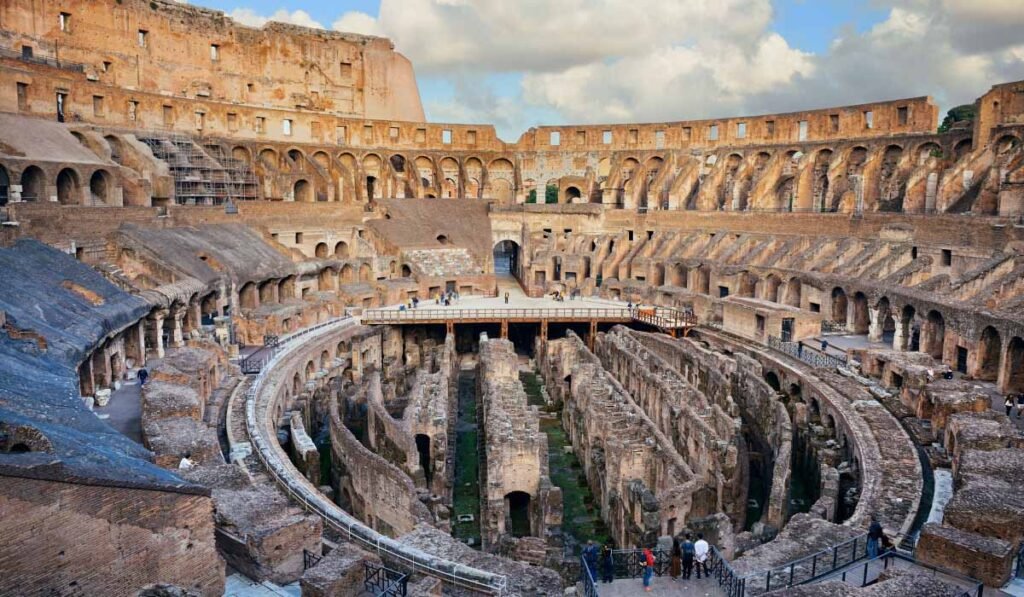
Built during the reign of the Flavian emperors as a gift to the Roman people, the Colosseum is a large amphitheater located just east of Palatine Hill. Once the stage for thrilling gladiator battles and grand spectacles, the Colosseum has stood as a symbol of Rome’s power and glory for nearly two thousand years.
Step inside and allow your imagination to run wild as you envision the heart-pounding clashes and dramatic performances that once captivated ancient audiences. Feel the echoes of history reverberate through the massive stone arches, and marvel at the ingenious design that has withstood the test of time.
Hours: 9 am to 7:15 pm (it closes earlier at various times during the year)
Tickets: €23 for a combined ticket to enter the Colosseum, Roman Forum, and Palatine Hill (well worth the price!). If you do visit all three attractions, we recommend planning to spend about three hours exploring them all.
Learn About History at The Roman Forum
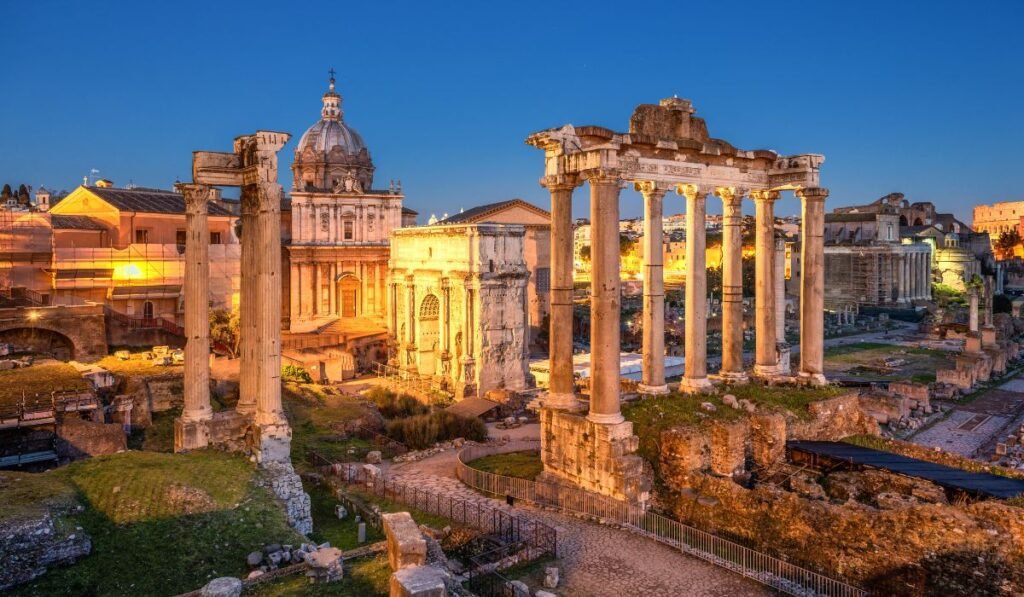
The Roman Forum is an ancient plaza located in the heart of the city (literally right next to the Colosseum). It was the center of public life in ancient Rome, where important political, religious, and social events took place.
Within the Roman Forum are several important ruins, including the Temple of Julius Caesar, the Arch of Titus, and the House of the Vestal Virgins. It also offers great views of the Colosseum and the surrounding area.
If you opt for the ticket combo mentioned above (and below), you can pop over to Palatine Hill while you’re here. According to Roman mythology, Palatine Hill was the location of the cave where Romulus and Remus were found by the she-wolf Lupa that kept them alive. It was also home to aristocrats and emperors, making it a desirable neighborhood in Ancient Rome.
Take time to explore the ruins of the Imperial Palace and gardens, including the House of Augustus and the House of Livia, and see the ancient Domitian Stadium, where athletes once competed.
Hours: 9 am to 7:15 pm (it closes earlier at various times during the year)
Tickets: As mentioned above, you can pay €23 for a combined ticket to enter the Colosseum, Roman Forum, and Palatine Hill. As history buffs, we believe this is absolutely worth the price. It was one of our favorite things to do in Rome, honestly, and we could have stayed for hours.
Witness History at The Patheon
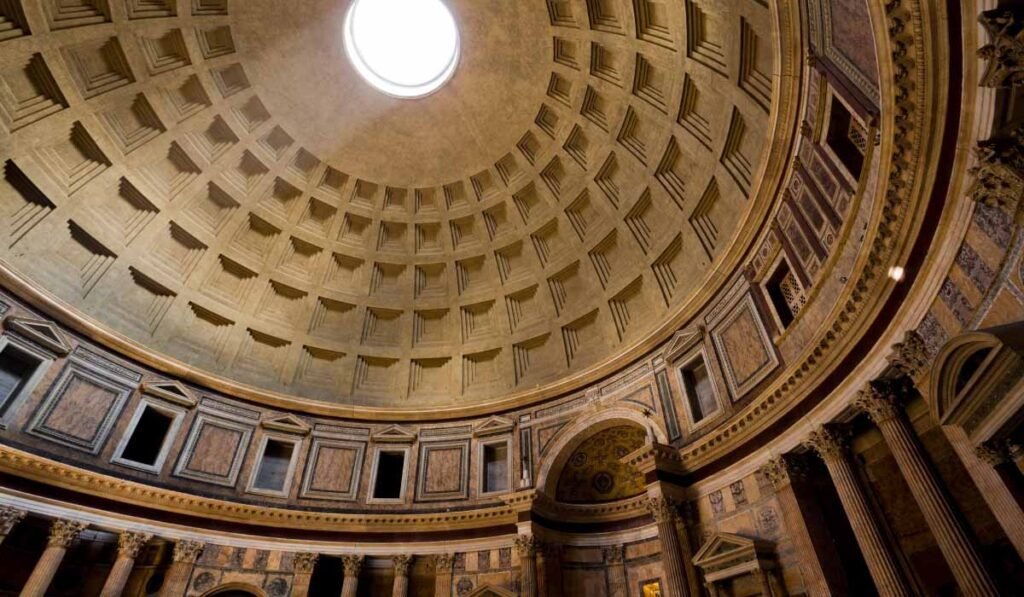
Step into the captivating world of Rome’s illustrious past as you explore The Pantheon, a place that’s so awe-inspiring and magnificent that it’s almost unbelievable. It’s one of the top three places in Europe that has literally taken our breath away.
Originally built as a temple to the gods (although historians believe Agrippa built the first version of the Pantheon in the 1st century BC as a celebration of Augustus’ victory at the Battle of Actium), this ancient marvel was later converted into a church, and today, it remains one of the best-preserved ancient structures in the world.
Upon entering, prepare to be mesmerized by the grandeur of its vast dome, adorned with a perfect oculus that floods the interior with natural light. The precise proportions and intricate details of this magnificent edifice showcase the remarkable skills of Roman architects and engineers.
The Pantheon also serves as the final resting place for several prominent figures, including the renowned artist Raphael. Don’t miss the chance to witness history in all its glory at this awe-inspiring monument — a true testament to the enduring allure of the Eternal City.
Hours: 9 am to 7 pm (last entry at 6:45 pm)
Tickets: It used to be free, but you’ll have to pay to enter now. Adults over 25 pay €5, while those 18-25 pay just €3. It’s free for anybody under 18 (and Roman residents).
Snap Photos at the Trevi Fountain
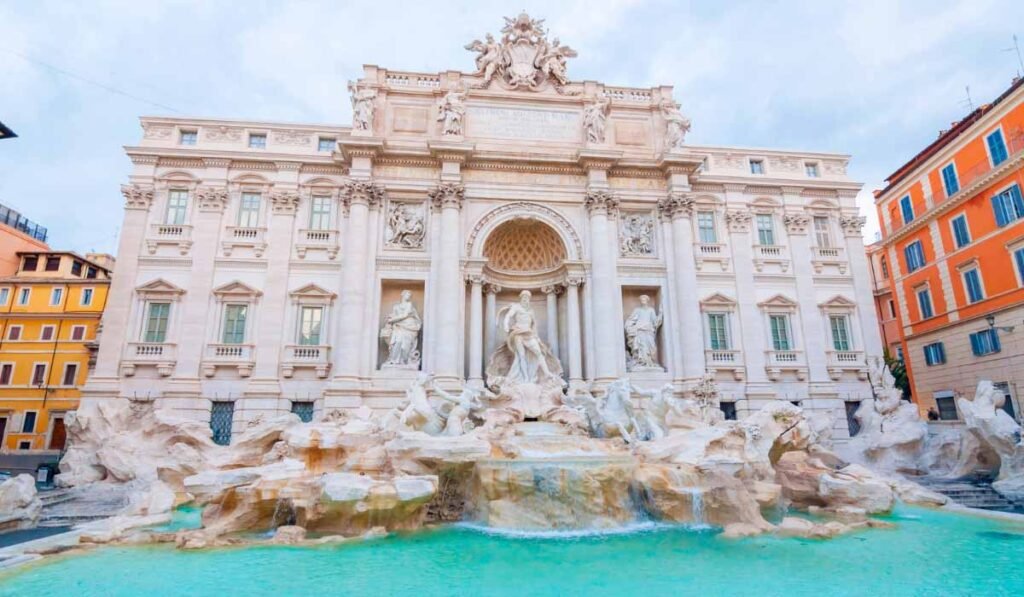
While the famous fountain was built in the 1700s, the aqueduct, called Aqua Virgo, servicing the fountain was built in 19 BC.
It’s one of the largest Baroque fountains in the world, with Oceanus sitting front and center, being pulled by two sea horses out into the crow. Abundance and Health are by his side, along with a lot of other stunning marble sculptures and intricate details.
Most go to toss a coin into the large basin at the bottom. According to legend, those who do will return to Rome. Aside from the allure and superstition, the site itself is quite romantic, especially if you’re lucky enough to explore it when nobody else is around.
What to Consider:
The Trevi Fountain is rarely solo. If you want to snap a photo like the one above, you’ll need to get there super early or brave the crowds to get up close and take a photo without people in it. Typically, though, it’s packed with tourists. When we went, we could barely walk by the outer area of the fountain as there were at least 100 people gathered around.
Visit the Pope at the Vatican City

You don’t have to be Catholic, or religious even, to enjoy a visit to Vatican City. Tourists from various religions and backgrounds often cite it as one of the best things to do in Rome due to its historical and religious significance.
We do, too, which is why we booked a stay right next to the Vatican City in the fall of 2023 (the area around it is quiet and safe, and the sounds of the church bells were nice in the morning!).
While it’s located within Rome, it’s actually a sovereign state and the smallest country in the world. It’s also the headquarters of the Roman Catholic Church and the seat of the Pope. A visit to this tiny country offers a unique opportunity to witness the art, architecture, and history of the Catholic Church throughout the centuries.
Highlights of the Vatican City include St. Peter’s Basilica, the Vatican Museums, and the Sistine Chapel, where Michelangelo painted the famous ceiling. Tourists can also attend a papal audience or visit the Vatican Gardens.
Hours: Monday to Saturday, 9 am to 6 pm (last entry at 4 pm); times vary depending on the day of the month, though, so check before your visit!
Tickets: Getting into Vatican City is free, but you have to pay between €8 to 17 to visit the Vatican museums. Buy your tickets in advance, as they sell out fast!
People Watch at Piazza di Spagna
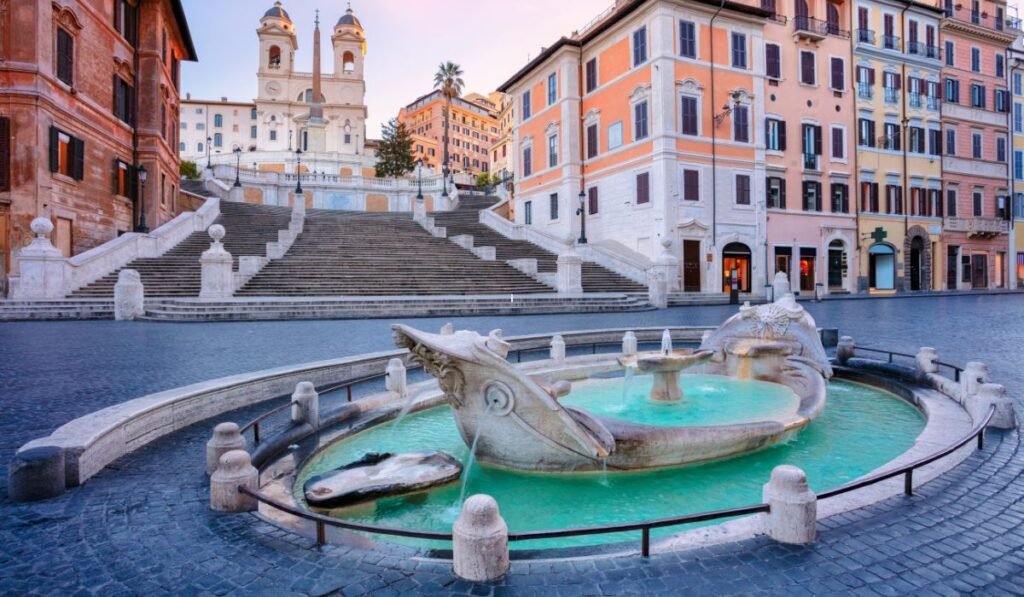
Piazza di Spagna is a popular attraction located in the center of Rome. This beautiful square is home to the famous Spanish Steps and the Palazzo di Spagna, which houses the Embassy of Spain to the Holy See. The steps lead up to the Church of Trinità dei Monti, offering nice views of the city below.
One of the main attractions of the square is the Column of the Immaculate Conception of the Blessed Virgin Mary. The square itself is also a lovely place to relax and people watch, with its picturesque fountain and charming atmosphere.
In addition to the steps and fountain, there are plenty of high-end shops and boutiques in the area, making it a great place for shopping and dining. We ate lunch here during our visit and indulged in some gelato nearby, which was one of the best gelatos we had while traveling through Italy.
Explore the Original Entrance to Rome at the Piazza del Popolo
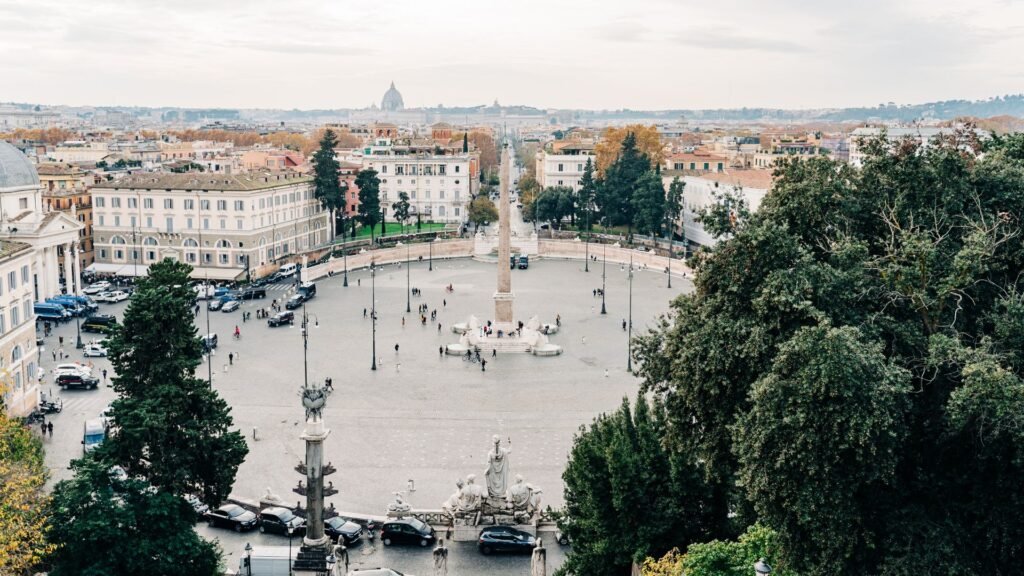
In the heart of Rome lies the Piazza del Popolo. Its name, translating to “People’s Square,” belies its ancient origins as a gateway into the city — a place where visitors would first set foot in Rome, awestruck by its grandeur (at least, we can only imagine as such; even in ancient times, Rome must have had overpowering energy).
The Piazza del Popolo is adorned with architectural masterpieces such as the Egyptian Flaminian obelisk and the twin churches, Santa Maria dei Miracoli and Santa Maria di Montesanto, that frame the entrance to the square.
Wander further, and you’ll discover the Basilica of Santa Maria del Popolo, which houses magnificent works by Caravaggio and a chapel built and decorated by Raphael.
To get here, walk over from the nearby Spanish Steps or hop on the Metro Line A to the Flaminio station. As you soak up Piazza del Popolo’s rich history, take a moment to savor a cappuccino at one of the charming cafes peppering the perimeter of the plaza.
Frequently Asked Questions About Rome
What is the real capital of Italy?
The real capital of Italy is Rome, a historic city that was founded in 753 BC and has been the center of Italian politics, culture, and religion for centuries. Rome was the capital of an ancient republic and empire that defined the Western world in antiquity and left a significant impact on modern culture and politics.
Is the capital of Italy Milan or Rome?
Milan and Rome are both important cities in Italy, but Rome is the capital of Italy. Rome is located in central Italy and is known for its ancient ruins, historic architecture, and the Vatican City. Milan, on the other hand, is a major city in northern Italy, and it’s known for its fashion, design, art, manufacturing, and finance industries.
What language do they speak in Rome?
Italian is spoken in Rome. However, because Rome is so frequented by tourists, you’ll find that most people in bars, restaurants, hotels, and other places speak English these days, too.

